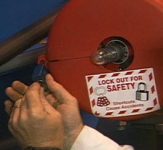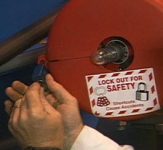Category: Special Topics in Safety Management
Safety is a process, and as such, needs to be managed. This section offers resources to create a viable safety program, sell it to senior management, train supervisors and employees in using it, and then track and report your progress. Look also for ways to advance your own skills in these areas, both for your current job, and those that follow.
Free Special Report: 50 Tips for More Effective Safety Training
Recently, one of our subscribers asked the following question: For pedestrian safety, how wide does a designated protected employee travel path need to be? What type of stationary protective guards are acceptable to prevent forklifts from hitting pedestrians?
In 2014, OSHA extended the deadline for crane operator certification for three years, to November 10, 2017. Until then, OSHA says it will “consider addressing operator qualifications through additional rulemaking.” Meanwhile, employees continue to suffer when employers fail to provide adequate protection. Learn more here.
Hearing loss can have a debilitating impact on a worker’s life. Get the latest here on a new study from the National Institute for Occupational Safety and Health (NIOSH) of conditions that affect workers exposed to occupational noise.
Thousands of employees are blinded and countless lives transformed each year as a result of work-related eye injuries that could have been prevented. Eye injuries are not just tragic; they’re expensive to the tune of more than $300 million each year in lost production time, medical expenses, and workers’ compensation costs.
Every year, between 150 and 200 fatalities and some 50,000 injuries occur due to failure to control the release of hazardous energy. Lockout/tagout (LOTO) refers to the OSHA-required practices and procedures to protect workers from unexpected start-up of machinery or hazardous energy released during service or maintenance.
OSHA’s new confined space standard for construction has been in effect since August.
For years, the safety community has discussed and debated the merits of a safety process that aims to eradicate all injuries, incidents, and fatalities. How reasonable is it to aim for the very pinnacle of safety achievement? Is the goal too lofty to inspire change? Could it actually hamper your efforts?
What gets employers into LOTO trouble with OSHA? Attorney Nickole Winnett, shareholder in the Washington, D.C., office of Jackson Lewis, points to a number of culprits, including failing to ensure that energy control procedures have been developed, documented, and are in use for each piece of equipment where servicing and maintenance occur.
The EPA published its proposed Hazardous Waste Generator Improvement rule on September 25, 2015, that it says addresses problems the Agency identified with the current generator regulations:
Is fit testing required for all respirators? Are there circumstances where fit testing is not required?










